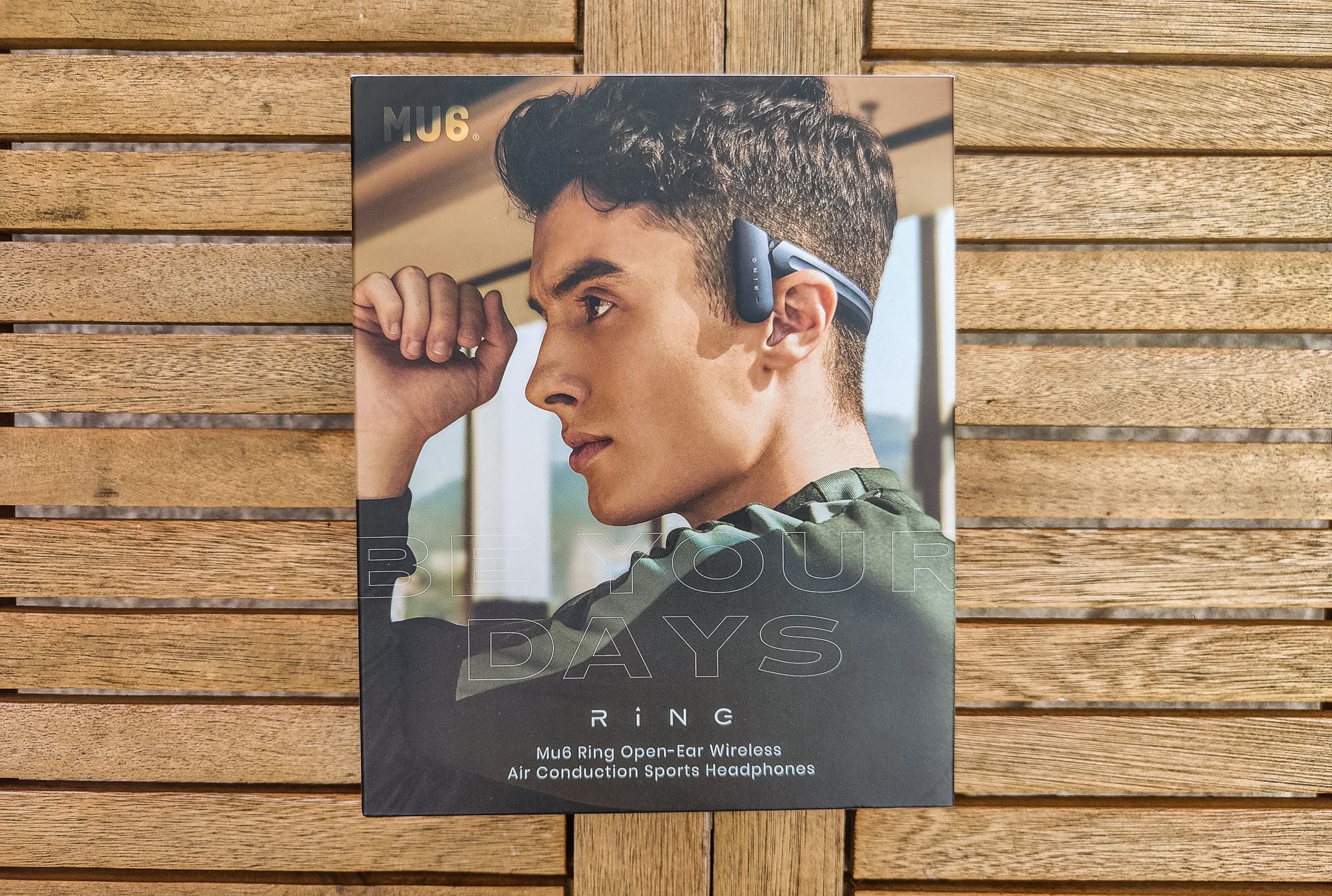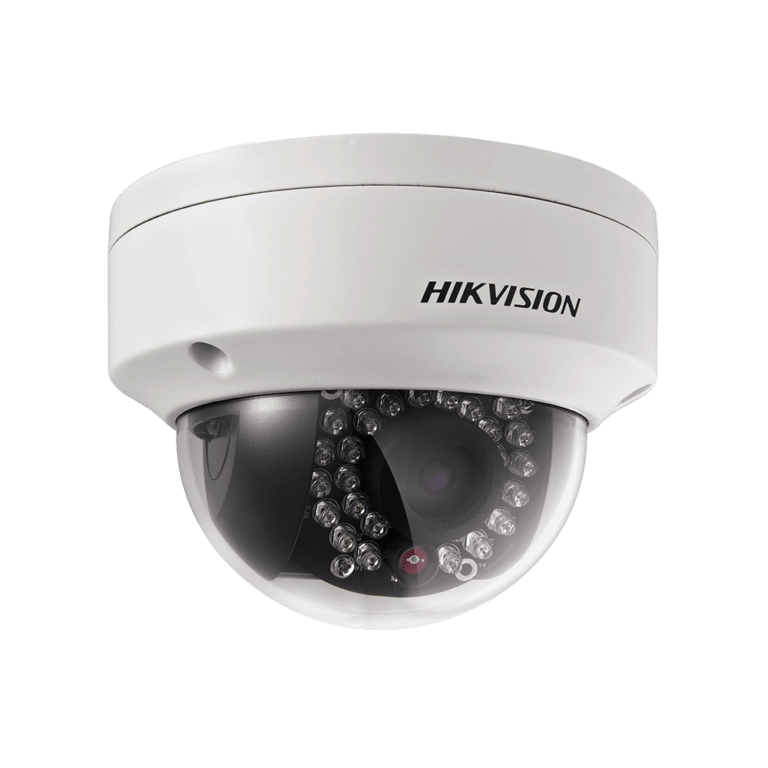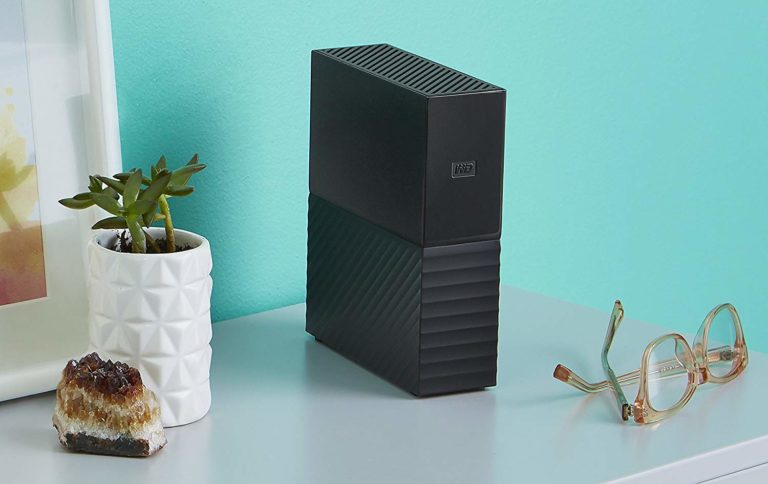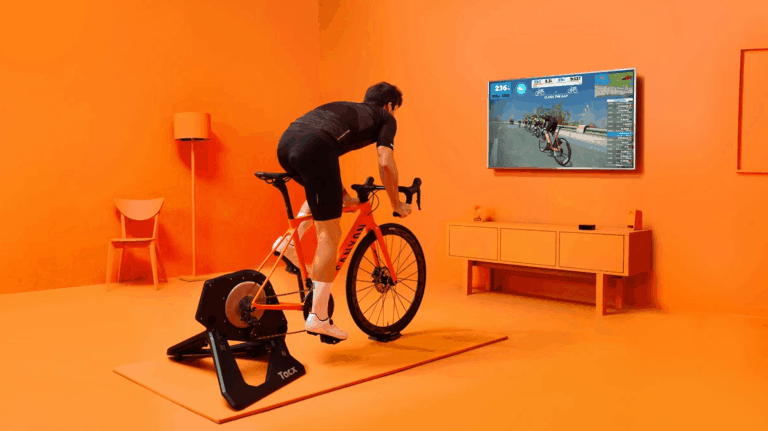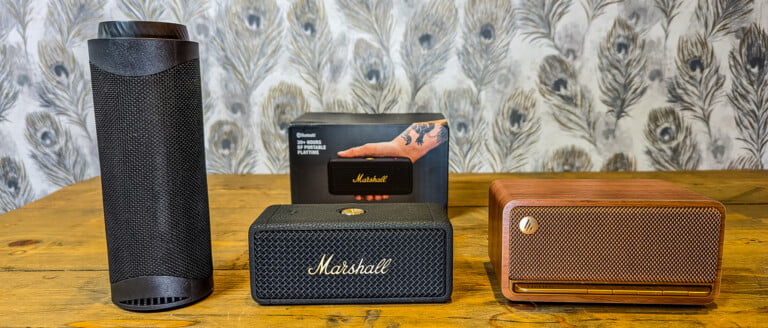Any links to online stores should be assumed to be affiliates. The company or PR agency provides all or most review samples. They have no control over my content, and I provide my honest opinion.
I was impressed with the Mu6 Space2 when I reviewed them, they are still some of the best performing ANC headphones I have used.
Mu6 are now back with something a little different. Air conduction headphones. These open fit headphones offer an alternative solution to the popular bone-conducting headphones from Aftershokz, and they are quite affordable too.
Specification
- Driver: 16mm
- Impedance: 20 ohms
- Sensitivity: 112 +-3db
- Frequency response: 20-20,000Hz
- Bluetooth: 5.0
- Codec Support: AAC, SBC
- Protocols Supported: HFP / A2DP / AVRCP / HSP
- Bluetooth range: ~10 meters
- Power input: 5.0V
- Battery capacity: 200mAH
- Talk time: 9 hours
- Audio playback: 9 hours
- Standby time: 200 hours
- Charging port: Micro-USB
- Weight: 35g
- Size: 157x121x20mm
- Colour: Dark blue
Air Conducting Earphones vs Bone Conducting
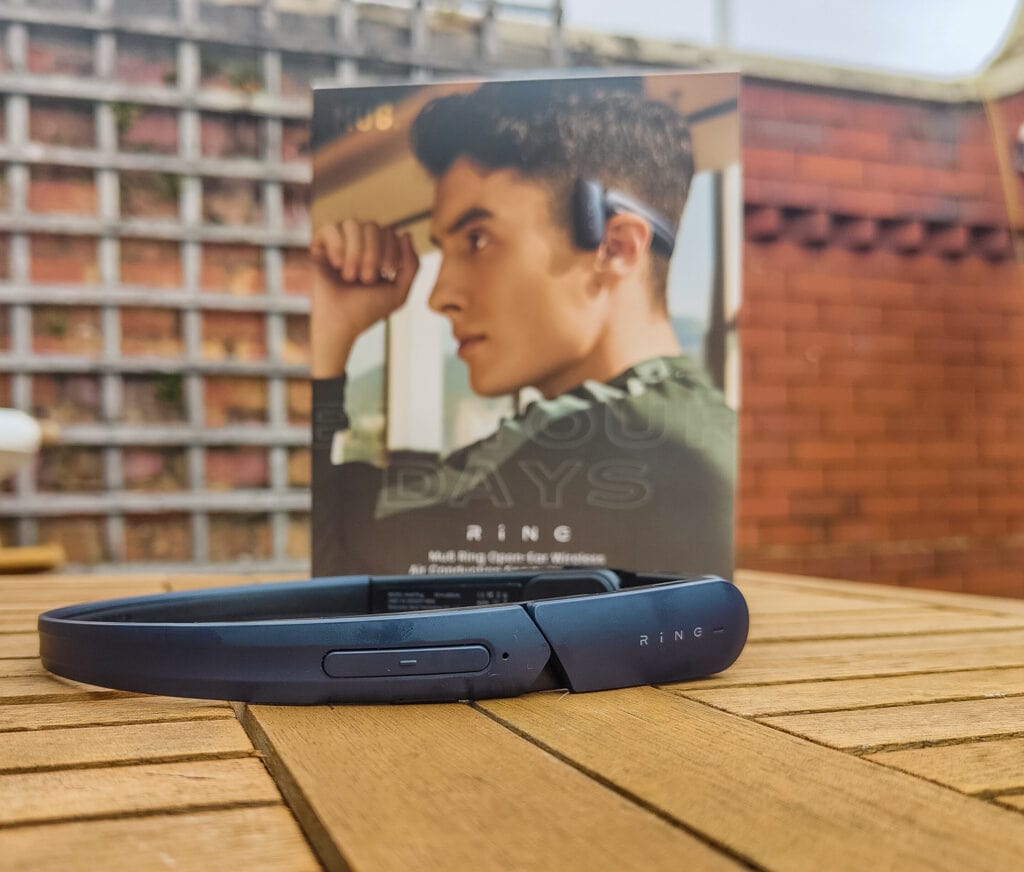
The Mu6 Ring advertises itself as being air conducting earphones as opposed to bone-conducting from the market-leading Aftershokz.
Air conducting is just a fancy way of saying it is a normal speaker. Rather than sitting inside or on your ear like most headphones, these sit a little bit in front of it. At best, the speaker has been designed to be directional.
Bose use a similar concept, they just call it Bose OpenAudio, and it is used on the Bose Frames plus the Bose Sport Open Earbuds.
I have found that this style of headphone offers good quality audio, with superior well-rounded bass. However, they suffer from sound leakage, and this also limits the volume you can achieve.
Aftershokz, with their bone conduction, sends vibrations directly to the inner ear, bypassing the eardrums. This sounds a lot fancier than it actually is, but it does offer some benefits. These can go louder with considerably less sound leakage than the Mu6 or Bose, but the sound quality can’t quite compete with bass being one of the main weaknesses.
Design / Fit / Comfort
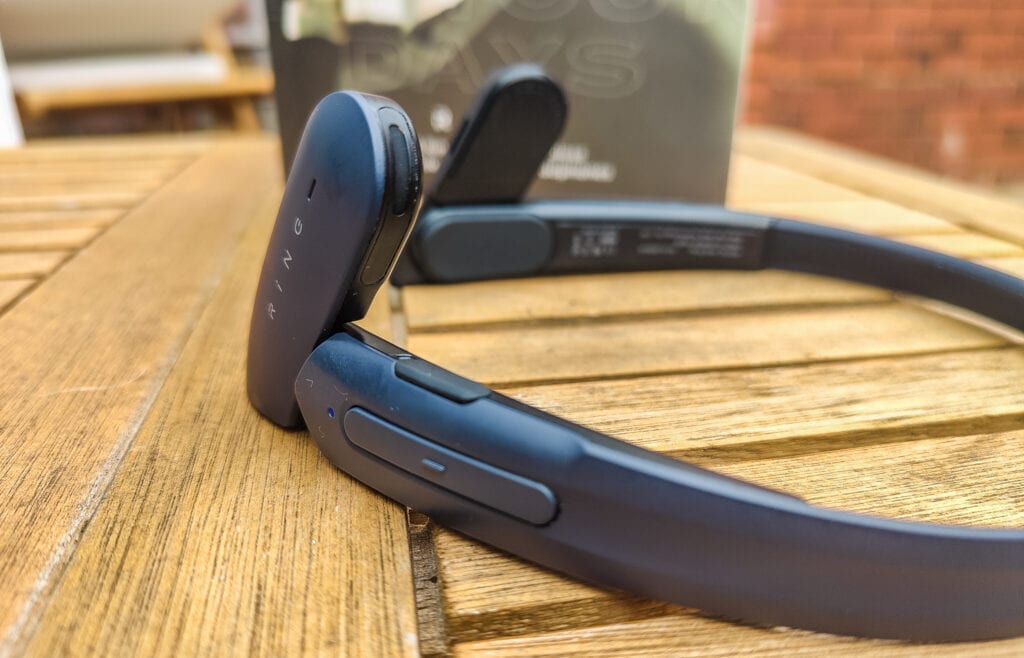
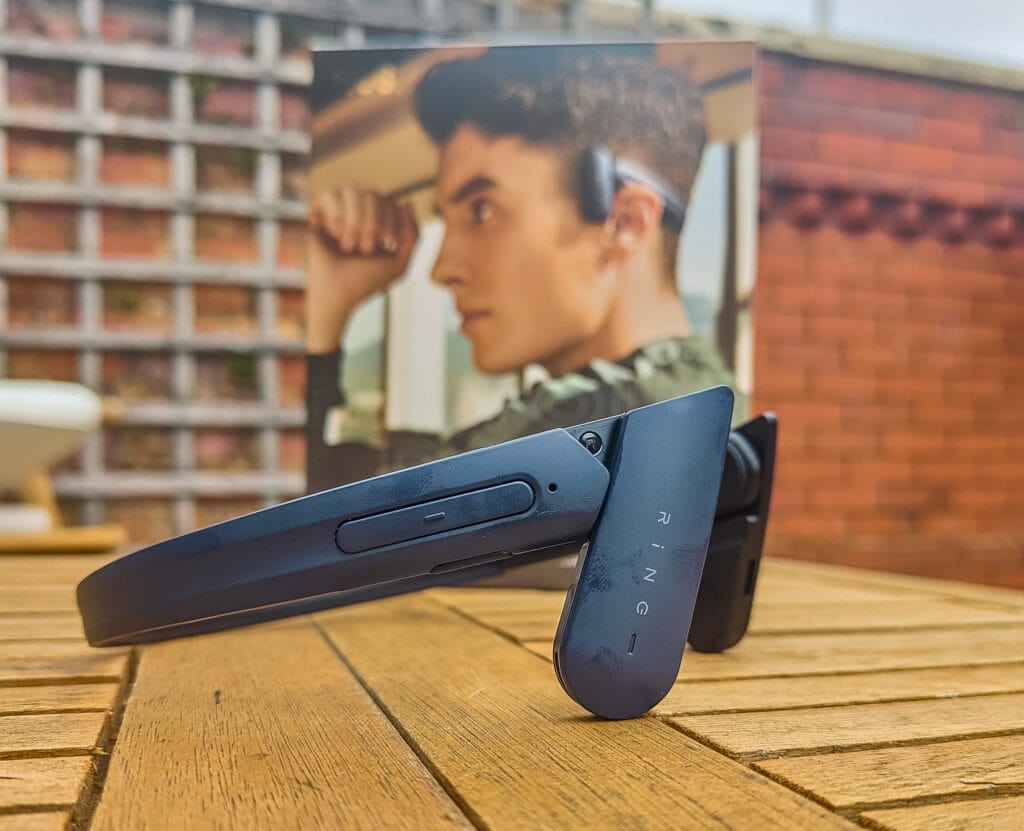
The Mu6 have quite a chunky design with thick headband. The earpieces themselves are on an adjustable hinge, so you have a bit more flexibility with the fit compared to Aftershokz.
There is then a small groove on the inside of the earpiece which is designed to let the arms of the glasses slide through.
However, the overall chunky nature of these makes them a little awkward to fit with some cycling glasses. This then also causes some issues with cycling helmets, the frames are a bit to chunky to accommodate a close-fitting road bike helmet.
Annoyingly, these use a microUSB port for charging, it is 2021, and there is just no need for this now.
Sound Quality / Sound Leakage

The sound quality from these is surprisingly good. They don’t compete with in-ear or on-ear headphones, but they offer a well-balanced sound with a pleasant amount of bass.
They also don’t have the strange sensation of a bone conducting earphones rumbling on the side of your skull.
The main downside of this is that they are quite audible at moderate volumes, and because of the sound leakage, the maximum volume you can turn these up to is quite limited. It is fine for general use and fitness, but wind noise will quickly drown out the audio if you are moving too fast, or if it is just very windy.
Running / Cycling
For most runners, these will work well. They are comfortable to wear, sound great and you have all the benefits of the environmental awareness from the open fit.
There is no mention of it on the website, but my press contact stated that these are IPX5 rated. I am a little sceptical of this claim as they don’t look particularily waterproof, but I am an extremely sweaty runner, and I have experienced no issues so far. This rating is better than the IPX4 of the Bose and matches some of the more affordable Aftershokz, but for more serious athletes, you may want the IP67 rating of the Aeropex.
I think you might experience some issues with the sound being drowned out if you are running into the wind or just running very fast, so these may not always be the perfect running headphones.
As previously mentioned, cycling is a bit more problematic. The overall design isn’t particularily usable with cycling helmets, and putting on glasses as well will introduce more issues. Then when you are cycling at moderate speeds, it will absolutely drown out the audio due to wind noise.
Battery Life
Battery life is excellent, these are rating for 9 hours. I haven’t tested them to their limits but I have used them for long sessions in the gym and also long runs. I am normally left with plenty of battery after 4+ hours.
Price and Alternative Options
The Mu6 Ring is currently available from Amazon for £59.99 or GadgetPlus for $79 with free shipping.
The cheapest AfterShokz are the Trekz Titanium for around £70 or the OpenMove for around £80
You then have various semi-open fit headphones such as the BackBeat Fit 2100 for £50 or the Cleer Goal TWS for £99
Overall
I like the Mu6 Ring they offer a more comfortable experience and superior sound quality than the Aftershokz headphones I have used.
These are ideal for running and general outdoor fitness, but they will be prone to be drowned out by wind noise. Pricing is attractive too, so the lower price point and better sound quality will make these a preferential choice for casual running. I also am inclined to use these over my Aftershockz for my next marathon.
Unfortunately, due to the design, these are not ideal for road cycling, but more casual cyclists may find them OK.
Mu6 Ring Air Conducting Wireless Headphones Review Rating
Summary
For casual running and outdooor fitness, these are great. They are cheaper than the Aftershokz bone conducting earphones or Bose OpenAudio. Sound quality and comfort are good, but they don’t fit very well under cycling helmets and wind noise will easily drown out the audio.
Overall
75%-
Overall - 75%75%
Pros
- Superior sound to bone conduction
- More comfortable than bone-conducting earphones
- Cheaper than AfterShokz
Cons
- Won’t fit under many cycling helmets
- Volume doesn’t get very loud
- Prone to being drowned out by wind noise
I am James, a UK-based tech enthusiast and the Editor and Owner of Mighty Gadget, which I’ve proudly run since 2007. Passionate about all things technology, my expertise spans from computers and networking to mobile, wearables, and smart home devices.
As a fitness fanatic who loves running and cycling, I also have a keen interest in fitness-related technology, and I take every opportunity to cover this niche on my blog. My diverse interests allow me to bring a unique perspective to tech blogging, merging lifestyle, fitness, and the latest tech trends.
In my academic pursuits, I earned a BSc in Information Systems Design from UCLAN, before advancing my learning with a Master’s Degree in Computing. This advanced study also included Cisco CCNA accreditation, further demonstrating my commitment to understanding and staying ahead of the technology curve.
I’m proud to share that Vuelio has consistently ranked Mighty Gadget as one of the top technology blogs in the UK. With my dedication to technology and drive to share my insights, I aim to continue providing my readers with engaging and informative content.

